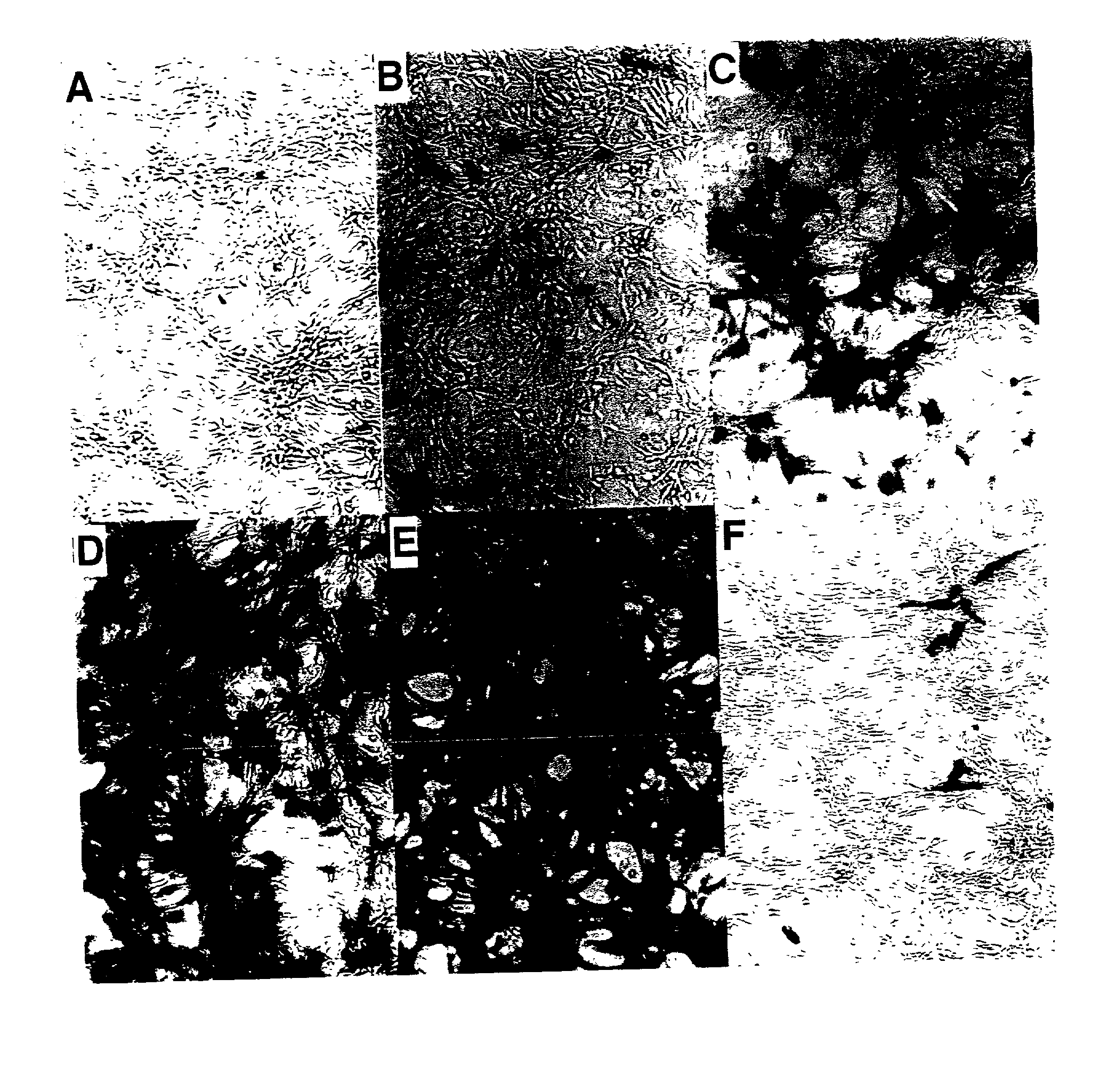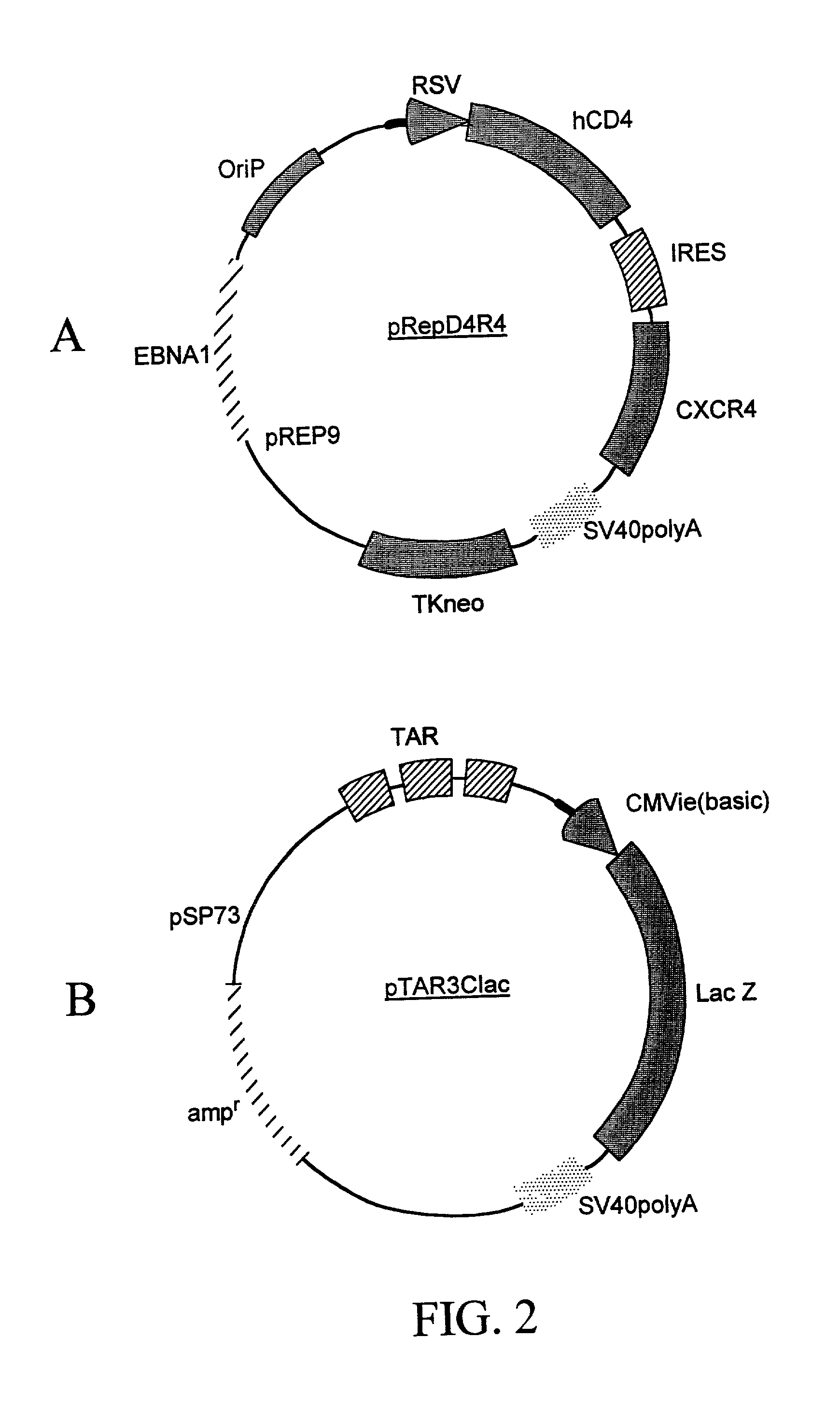Methods of monitoring HIV drug resistance
- Summary
- Abstract
- Description
- Claims
- Application Information
AI Technical Summary
Benefits of technology
Problems solved by technology
Method used
Image
Examples
Embodiment Construction
[0159] 1. Productive Infection of Recombinant HeLa Cells with HIV virus
[0160] A recombinant cell line was established from human cervical cancer HeLa cells. The HeLa cells were cotransfected with an expression vector (pRepD4R4) and a vector (pTAR3CIac) at a 1:1 ratio. As shown in FIG. 2A the expression vector pRepD4R4 includes CD4 receptor and CXCR4 receptor genes that are separated by an IRES sequence. As shown FIG. 2B the vector pTAR3CIac includes a reporter sequence comprising a promoter region that includes three copies of TAR sequences and a CMV basic promoter, and a lacZ reporter gene whose expression is under the control of the promoter. The stably-transfected cells were selected by culturing in medium containing G418 at 900 .mu.g / ml. Each clone of the cells selected was subsequently cultured in duplicates, and one of the duplicates was infected with a low titer HIV stock solution. The low-titer HIV stock was collected from supernatant of a HeLa cell culture that was transfec...
PUM
| Property | Measurement | Unit |
|---|---|---|
| Electrical resistance | aaaaa | aaaaa |
| Surface | aaaaa | aaaaa |
| Gene expression profile | aaaaa | aaaaa |
Abstract
Description
Claims
Application Information
 Login to View More
Login to View More - R&D
- Intellectual Property
- Life Sciences
- Materials
- Tech Scout
- Unparalleled Data Quality
- Higher Quality Content
- 60% Fewer Hallucinations
Browse by: Latest US Patents, China's latest patents, Technical Efficacy Thesaurus, Application Domain, Technology Topic, Popular Technical Reports.
© 2025 PatSnap. All rights reserved.Legal|Privacy policy|Modern Slavery Act Transparency Statement|Sitemap|About US| Contact US: help@patsnap.com



